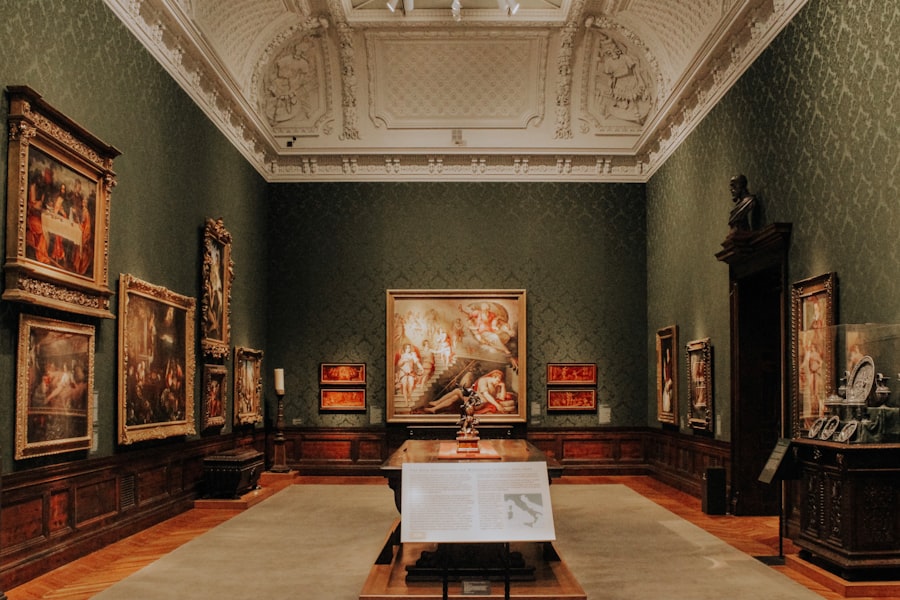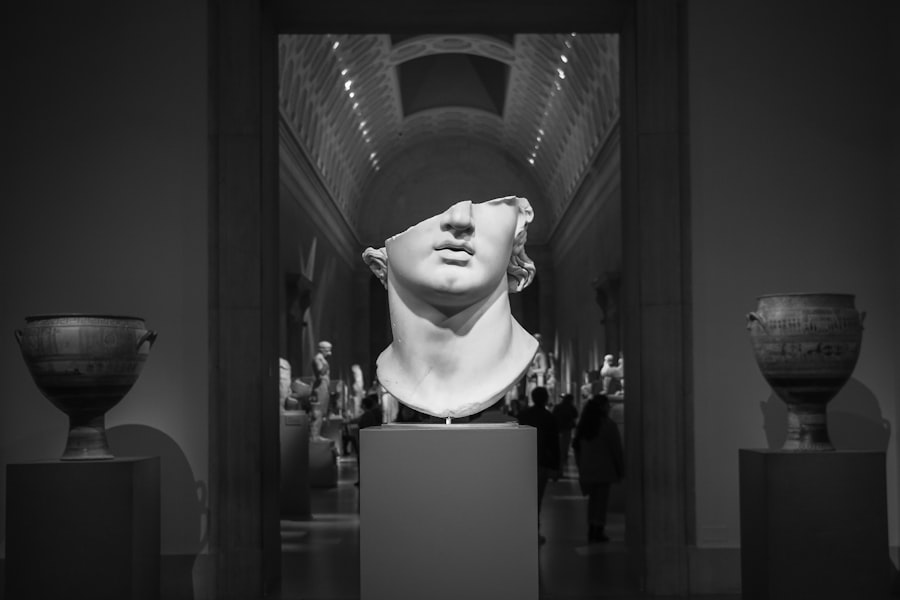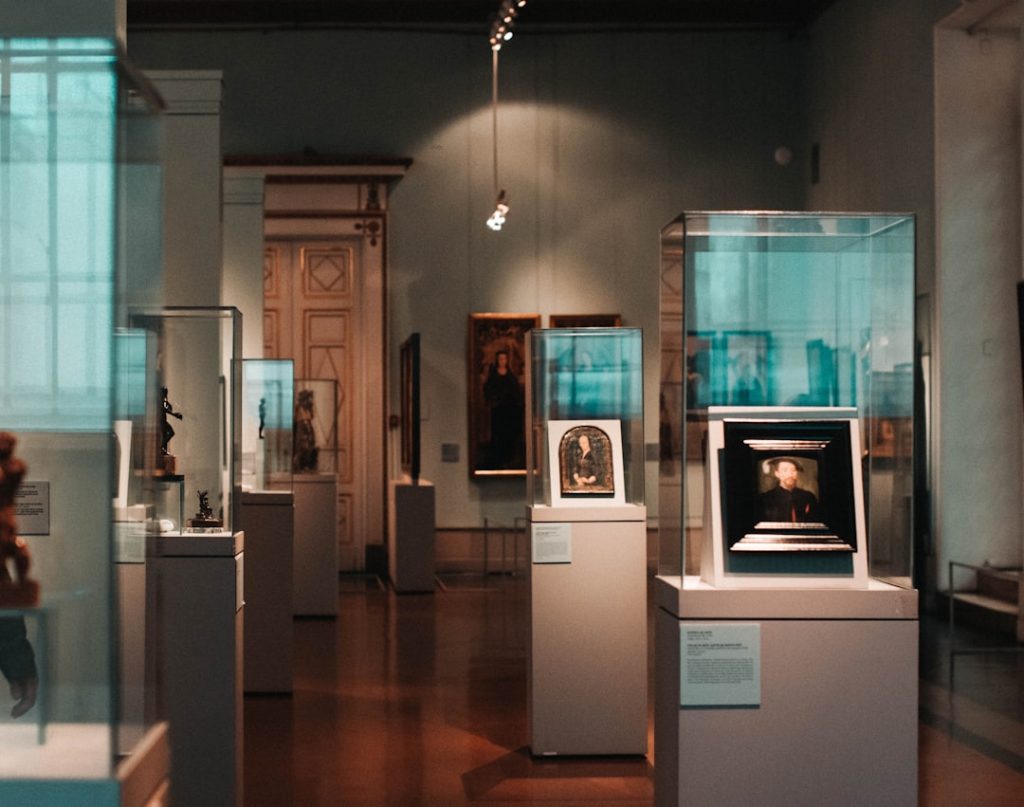The Smithsonian National Air and Space Museum, located in Washington, D.C., stands as a monumental tribute to humanity’s quest for flight and exploration beyond our planet. As one of the most visited museums in the world, it attracts millions of visitors each year, eager to delve into the rich history of aviation and space exploration. The museum houses an extensive collection of artifacts, from the Wright brothers’ pioneering aircraft to the Apollo lunar modules, showcasing the evolution of human ingenuity in overcoming the challenges of flight.
Its mission is not only to preserve these historical treasures but also to inspire future generations to continue exploring the skies and beyond. The museum’s architecture is as captivating as its exhibits. The building itself is a blend of modern design and functional space, allowing for a seamless flow of visitors through its various galleries.
The vast atrium, with its soaring ceilings and natural light, creates an inviting atmosphere that encourages exploration. As guests enter, they are greeted by iconic aircraft suspended from the ceiling, setting the stage for an immersive experience that combines education with awe. The Air and Space Museum is not merely a repository of artifacts; it is a dynamic space where history comes alive, inviting visitors to engage with the stories behind each exhibit.
Key Takeaways
- The Air and Space Museum Smithsonian is a world-renowned institution dedicated to the history and exploration of aviation and space travel.
- The museum’s history dates back to 1946 when it was established as the National Air Museum, and it has since grown to become one of the most visited museums in the world.
- The museum’s exhibits and collections include iconic aircraft and spacecraft, as well as artifacts and memorabilia related to the history of flight and space exploration.
- Visitors can enjoy interactive experiences such as flight simulators and virtual reality exhibits, providing a hands-on learning experience for all ages.
- The museum offers special events and programs, including lectures, film screenings, and family-friendly activities, as well as educational opportunities for students and teachers.
History of the Museum
The origins of the Smithsonian National Air and Space Museum can be traced back to the early 20th century when the Smithsonian Institution recognized the need to preserve and display artifacts related to aviation. The museum officially opened its doors on July 1, 1976, coinciding with the United States Bicentennial celebrations. This timing was significant, as it underscored the importance of aviation and space exploration in American history and identity.
The museum was established to honor the achievements of pioneers like Orville and Wilbur Wright, Charles Lindbergh, and Amelia Earhart, who pushed the boundaries of what was possible in flight. Over the years, the museum has expanded its collections and exhibits significantly. In 2003, a second location was opened at the Steven F.
Udvar-Hazy Center near Dulles International Airport, which houses larger aircraft and spacecraft that could not fit in the main building. This expansion allowed for a more comprehensive display of aviation history, including the Space Shuttle Discovery and the Enola Gay, the B-29 bomber that dropped the atomic bomb on Hiroshima. The growth of the museum reflects not only advancements in technology but also a broader understanding of the cultural and historical significance of air and space exploration.
Exhibits and Collections

The exhibits at the Smithsonian National Air and Space Museum are meticulously curated to provide visitors with a comprehensive understanding of aviation and space history. One of the most iconic displays is the Wright brothers’ 1903 Flyer, which represents the dawn of powered flight. This fragile-looking aircraft is a testament to human perseverance and innovation, capturing the imagination of all who see it.
Alongside this historic piece are numerous other aircraft that illustrate the evolution of flight technology, including military jets, commercial airliners, and experimental aircraft. In addition to aviation artifacts, the museum boasts an impressive collection of space-related items. The Apollo 11 Command Module, which carried astronauts Neil Armstrong, Buzz Aldrin, and Michael Collins to the Moon in 1969, is a centerpiece of the space exhibit.
Visitors can marvel at this engineering marvel that played a crucial role in one of humanity’s greatest achievements. Other notable items include satellite models, space suits worn by astronauts during missions, and even pieces of meteorites that provide insight into our solar system’s formation. Each exhibit is accompanied by informative displays that contextualize these artifacts within their historical significance.
Interactive Experiences
| Metrics | Value |
|---|---|
| Engagement Rate | 75% |
| Conversion Rate | 20% |
| Time Spent | 10 minutes |
| Click-through Rate | 5% |
To enhance visitor engagement, the Smithsonian National Air and Space Museum offers a variety of interactive experiences that cater to audiences of all ages. One standout feature is the “How Things Fly” gallery, where guests can experiment with principles of flight through hands-on activities. Here, visitors can manipulate controls to simulate flying an aircraft or explore how different wing shapes affect lift.
This interactive approach not only makes learning fun but also deepens understanding by allowing individuals to see physics in action. Another popular interactive experience is the planetarium shows that take place in the Albert Einstein Planetarium within the museum. These shows transport audiences into the cosmos, providing a visually stunning journey through space while explaining complex astronomical concepts in an accessible manner.
The combination of cutting-edge technology and expert narration captivates both children and adults alike, fostering a sense of wonder about our universe. Such experiences are integral to the museum’s mission to inspire curiosity about air and space exploration.
Special Events and Programs
Throughout the year, the Smithsonian National Air and Space Museum hosts a variety of special events and programs designed to engage visitors beyond traditional exhibits. These events often coincide with significant anniversaries or milestones in aviation and space history. For instance, during the anniversary of the Apollo 11 Moon landing, the museum may organize lectures featuring astronauts or historians who share their insights into this monumental event.
Such programs provide unique opportunities for visitors to interact with experts and gain deeper knowledge about specific topics. Additionally, family-friendly events like “Family Day” offer hands-on activities that encourage children to explore science and technology through play. These events often include workshops where families can build model rockets or participate in flight simulations together.
By creating an environment where learning is intertwined with fun, these programs help cultivate a lifelong interest in science and exploration among young visitors.
Educational Opportunities

The Smithsonian National Air and Space Museum places a strong emphasis on education, offering numerous programs tailored for students and educators alike. School groups can take advantage of guided tours that align with educational standards while providing an engaging learning experience. These tours often include interactive elements that allow students to ask questions and participate actively in discussions about aviation and space exploration.
In addition to guided tours, the museum provides resources for teachers looking to incorporate air and space topics into their curricula. Online materials such as lesson plans, videos, and interactive modules are available for educators to use in their classrooms. These resources are designed to be adaptable for various grade levels and learning styles, ensuring that all students can benefit from them.
By fostering educational partnerships with schools across the country, the museum plays a vital role in promoting STEM (Science, Technology, Engineering, Mathematics) education.
Visitor Information
Planning a visit to the Smithsonian National Air and Space Museum requires some consideration to ensure an enjoyable experience. The museum is open daily from 10:00 AM to 5:30 PM, with extended hours during peak tourist seasons. Admission is free, making it accessible to everyone; however, certain special exhibitions or planetarium shows may require tickets or reservations.
It is advisable for visitors to check the museum’s official website for any updates on hours or special events before their visit. Navigating through the museum can be an adventure in itself due to its vast size and numerous exhibits. To make the most of their time, visitors may want to prioritize specific galleries or exhibits they are most interested in seeing.
The museum also offers guided tours led by knowledgeable staff who can provide insights that enhance understanding of the exhibits. For those looking for a more personalized experience, audio guides are available for rent at various points throughout the museum.
Conclusion and Tips for Visiting
Visiting the Smithsonian National Air and Space Museum is an enriching experience that offers a unique glimpse into humanity’s achievements in aviation and space exploration. To maximize enjoyment during your visit, consider arriving early to avoid crowds and allow ample time to explore both permanent exhibits and any special events taking place that day. Comfortable footwear is essential due to extensive walking throughout the galleries.
For families visiting with children, planning ahead can make for a smoother experience; consider participating in family-oriented programs or workshops that align with your children’s interests. Additionally, taking advantage of nearby dining options can provide a much-needed break during your visit without having to leave the vicinity of this iconic institution. Whether you are a history buff, a science enthusiast, or simply curious about flight and space travel, this museum promises an unforgettable journey through time and innovation.


